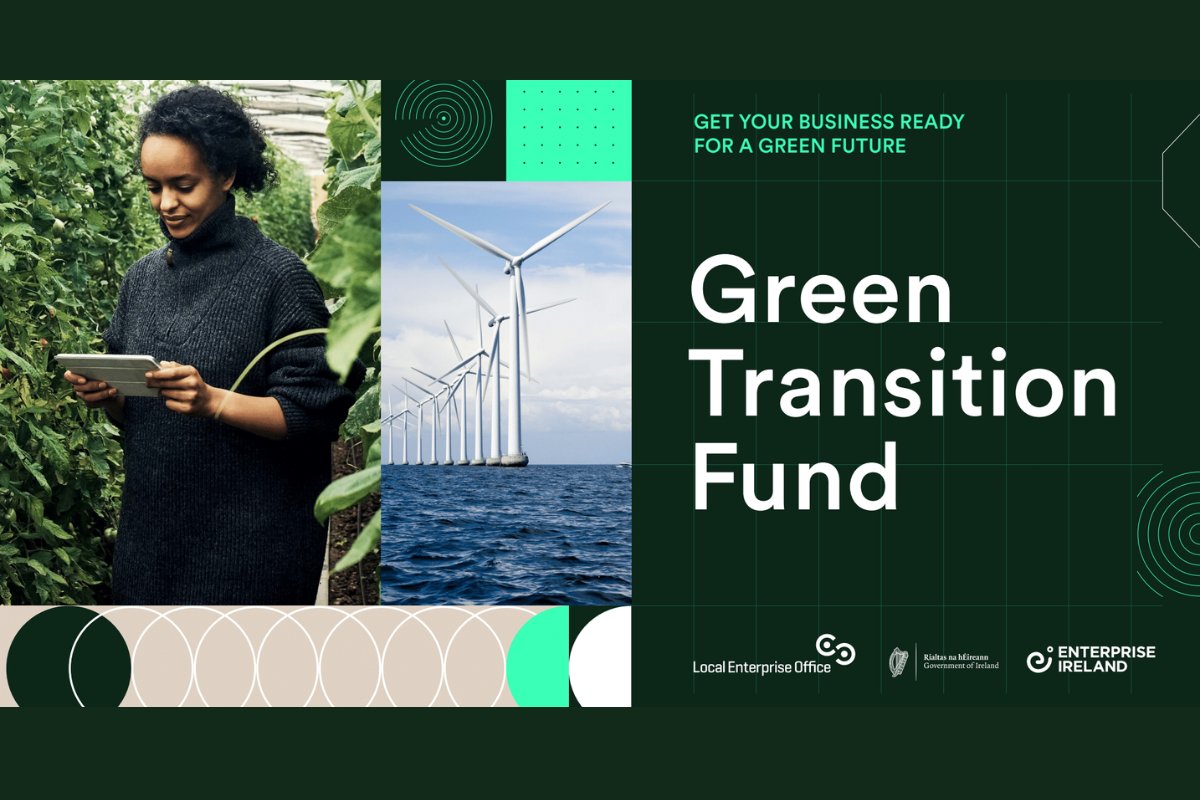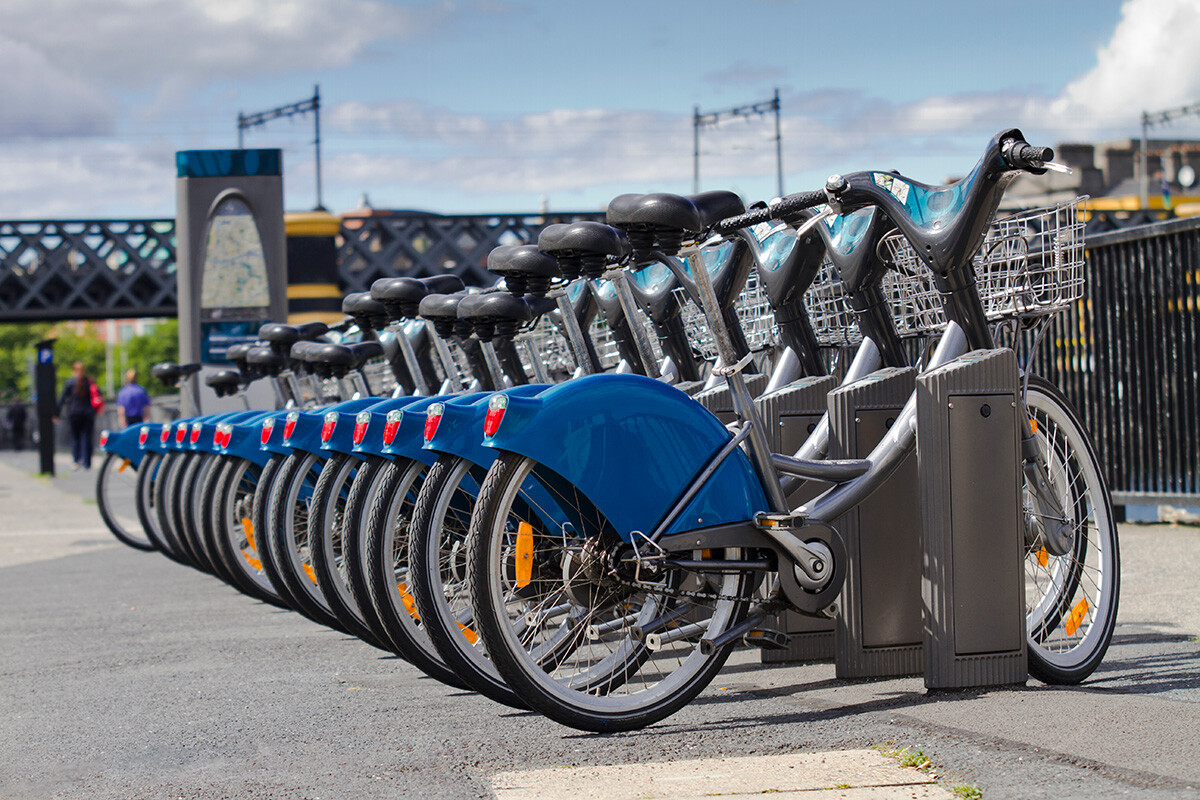Enterprise Ireland Grants – Green Start Plus
A major review of climate change science says that while the world is likely to pass a dangerous temperature threshold in the next decade, the worst...

In an age where Sustainability has rapidly become a core strategy of most Irish businesses, Carbon Footprinting has become an integral pathway to achieving that aim. Why is it necessary? How does it work? In this week’s article, we answer your questions.

Carbon Footprint, noun:
“a measure of the amount of carbon dioxide released into the atmosphere, as a result of the activities of a particular individual, organisation, or community”, Oxford English Dictionary
As the meteorological side-effects of Climate Change continue to deliver disastrous events across the globe, more countries are ramping up their plans to tackle the damage humanity has wreaked on the environment for over two centuries. And it’s not just governments that are expediting their climate action plans. Businesses around the world are adopting green policies, adapting the way they do things to support the transition to global sustainability.
One of the KPIs of business sustainability is the size of corporate Carbon Footprint. The larger the imprint, the bigger the impact. Reducing carbon footprint is literally a step in the right direction in terms of minimising and/or eradicating environmental impact.
In corporate terms, Carbon Footprint is the size of the imprint each one of our organisations leaves on the environment. In layman’s terms, carbon footprint is essentially the amount of CO2 we release into the atmosphere as a result of how and with what we do things. Carbon Footprint is typically measured in CO2e tonnes.

Greenhouse Gases or GHG are gases released into the earth’s atmosphere that trap heat in a similar way to the glass of a greenhouse, hence the name. Namely, Carbon Dioxide, Methane, Nitrous Oxide & Water Vapour.
GHG’s wrap themselves around the atmosphere like a thick blanket, enshrouding the earth, trapping heat close to its surface. Hence the term Greenhouse Gas Effect.
The growth over the years in CO2 emissions has been largely attributed to our ongoing dependence on Fossil Fuels. Combined with deforestation on an increasing scale has resulted in CO2 emissions growing by an alarming 50% over the last 150 years, with most of that growth taking place since the 1980s.

Similarly, the growth in methane emissions can be linked directly to the ever-increasing size of global cattle herds as well as the dramatic increase in the numbers of landfill waste sites especially in developing countries: Delhi, Mumbai and West NT China together account for 1,100 Acres of landfill. The largest individual landfill site, however, is the 2,200 Acre Apex Regional in Las Vegas, USA.
While Water Vapour is the most abundant of the GHGs, unlike CO2, it dissipates after a few days.
Although part of a natural meteorological process of heating the earth’s atmosphere, GHG emissions are exacerbating the pace and level at which temperatures are rising - hence Global Warming. The earth’s mean temperature has risen by 2.0 degrees Fahrenheit since 1880: however, that rate has doubled since 1980.
Global Warming has been the main catalyst for human-induced Climate Change, long-term shifts in weather patterns which according to scientists is “widespread and intensifying” at uncontrollable speed.
As we’ve already mentioned, Carbon Footprint is basically the measure of emissions resulting from an entity’s actions - individual, corporation or nation.
Before it can be measured, Carbon Footprint must be sourced - i.e., who, and by what means, are these emissions being caused.
Consumption Emissions are those emissions specifically arising from consumer activities. For example, if an Irish company flies in parts from China rather than shipping them in from the UK or, even better, sourcing them locally, all elements of the supply chain - production, transport (air miles) and usage - are attributed to that company by way of Carbon Footprint.
To put Ireland into context, here is a sample of the report into 2020 CO2 emissions. While we glow in comparison with Oil-rich countries such as Qatar and Saudi Arabia, we are embarrassingly behind on climate action milestones when compared to our much larger neighbour Great Britain.
Qatar
35.64
Ireland
6.68
USA
13.68
United Kingdom
4.66
Netherlands
11.64
Georgia
2.68
Ghana
0.54
So, while we already know that GHGs are the primary root cause of Climate Change, what are those activities which drive carbon emissions?
• Fossil Fuel Energy
• Agriculture
• Deforestation & Changes to How Land is Used
• Industry - (primarily) Manufacturing & Construction
• Waste
Agriculture
38%
Non-ETS
37%
Small Business/Farms, Homes, Transport (Vehicles)
ETS
37%
Large Industry, Aviation & Energy/Utilities
Other
3%
Refrigeration & Landfill
Simple ‘corporate lifestyle’ changes you can make to begin the minimisation of Carbon Footprint would include:
SWITCH IT OFF - We know it’s a no brainer, but you’d be surprised how many businesses leave lights on in their premises overnight, whether accidentally or by design. Switching off lights, printers, and other appliances and changing to LED bulbs will not just reduce carbon footprint, it will also save some euros along the way.
PLUG IT OUT - Kick standby into touch by plugging out TVs, speakers, phones, chargers, kitchen appliances and other devices such as monitors and game consoles (for the funkier of you with employee games rooms).
GO PAPERLESS - Do you need to print it? Again, and again, and again? And if you do, does it have to be in colour? Can you forgo printing and proof-reading by scrolling? Can you submit proposals or pitch to a client digitally rather than producing a glossy brochure? Speaking of digitally...
ZOOM IN - Where possible (and we appreciate that face to face is often a deal winner) organise online meetings to reduce travel. Speaking of travel,
TWO IS BETTER THAN FOUR - Encourage your employees to engage with your Sustainability programme (and improve their health) by availing of the Cycle to Work Scheme or even better, walking. Where car is the only option, encourage pooling/sharing. There are now even Car-Pooling Apps to facilitate transport to corporate events!
Aim to reduce your fleet of company cars and transition those numbers you need to keep into Hybrids or EVs.
STORE IT UP - Move to Cloud to reduce storage which doesn’t just chew electricity but clogs up your topological arteries.
THE THREE R’s - They’ve been around for decades, but never has the aim of Reduce, Reuse, Recycle had more relevant. Switch to 100% recycled newspapers. Bin paper cups and especially plastic cutlery and move back to delph and Sheffield stainless steel, encourage staff to buy their own keep cup, plates/tupperware and cutlery. Recycle all toner cartridges. Depending on availability of space, set up a small recycle zone for staff to place all recyclable items.
That’s where we come in.
From switching to sustainably sourced materials to implementing a management system that will optimise how you handle waste; CG Business Consulting will provide you with specific advice and tailored solutions that will fit both your operational and sustainability needs.
Our Corporate Carbon Footprint service comprises analysis of direct and indirect emissions produced organisation wide.
Our consultants will perform a comprehensive exercise of data gathering and review working to clearly defined boundaries, calculating and analysing emissions and assigning them to internal/external processes, products, resource and services.
This deep-dive analysis will calculate the impact of your organisation on the environment by measuring consumption data taking into consideration your consumption of elements such as Fossil Fuels (Oil/Gas), BioMass, Energy, Paper, other materials such as building materials, Travel/Transport and other CO2e(s).
In line with the requirements of ISO standards, the aim of Carbon Footprinting is one of continuous improvement meaning it is not a once off activity. Instead, carbon footprinting should be seen as one element of a long-term strategy of achieving full sustainability, a goal which can only be arrived at through ongoing monitoring and maintenance.
CG Business Consulting can offer your organisation a suite of Sustainability Services that will help reap tangible business benefits of Sustainability such as:
Improved productivity and reduction in operating costs
Attract progressive talent, investors and shareholders
Enhanced brand image and competitive advantage
Minimisation of carbon risk through improved energy efficiencies
Compliance with industry regulation and legislation
Funding available for all businesses/organisations committed to sustainability practices
But before you start to reduce carbon output, you must first understand the quanities you're putting out in the first place.
CG Business Consulting offers a full range of Sustainability Services. As an Enterprise Ireland approved service provider, our Sustainability experts can help your business prepare and apply for Enterprise Ireland supports to fund your Green Transition.
Recently we conducted an energy audit on a variety of small, medium and large Irish businesses to find out what's important to them when it comes to the Green Economy.

A major review of climate change science says that while the world is likely to pass a dangerous temperature threshold in the next decade, the worst...

In an age where Sustainability has rapidly become a core strategy of most Irish businesses, Carbon Footprinting is a key step in developing a...

In an age where data breaches and cyber threats loom large, safeguarding sensitive information has become paramount for businesses of all sizes. With...